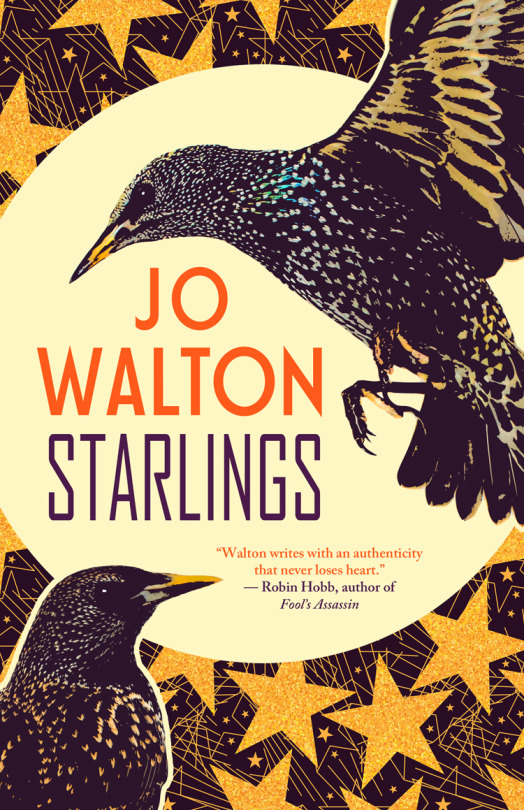STARLINGS by Jo Walton preview: “The Need to Stay the Same”
In celebration of the release of Jo Walton’s STARLINGS, Tachyon presents glimpses from some of the volume’s magnificent tales.

The
Need to Stay the Same
by Jo Walton
“The
Need to Stay the Same,” by Si. A review by Dorui.
“The
Need to Stay the Same” is the latest of Si’s “humans”
sequence, and at eight offerings so far the world and themes are
starting to feel familiar.
This
is the story of a human called Bruce who comes to the city of
Quingale on the cusp of autumn. Bruce, like all Si’s heroines, is
an outsider with a problem. Bruce’s particular and specific problem
is different from those in the earlier stories—what it is and how
it works out is a lot of why this is in the end worth your time, and
I don’t want to spoil it for you. But beyond the particulars of who
Bruce is and what kind of transformation it is that has brought her
to Quingale, this is something we’ve seen before.
In a
world where humans now have a kaleidoscopic variety of options as far
as gender, sexuality, and bodies go, they are still bound to the
physical, they still have to live in bodies. That’s the joy and
horror of the series, of course, the very physicality of the
characters—they eat, they make love, they move from place to place
all in the physical world. Si is as good as ever at describing the
sensations of humanity—the changes in temperature, the tastes, the
scents, even touch, the hardest to imagine of all. There’s a
stunning sequence here where Bruce longs to scratch her nose but is
prevented by social convention, which really made me believe what it
would be like to have a nose and an itch.
But
while this use of physicality was revolutionary and astonishing in
the justly celebrated “Birth and Death,” and still exciting and
fascinating in subsequent volumes, I’m getting a little tired of
it. Yes, Bruce’s body makes an involuntary twitch as she shivers in
a cold wind—I remember the same thing happening to Lu Song in
“Living Without You.” Sure, the leaves that have helped trees
convert sunlight to nutrients all summer are slowly drifting to the
ground, and yes, it’s an amazing piece of chemical and biological
imagination, but it was described in “The Flowers in the
Wheelbarrow.” It’s interesting that now the fixed genders of
earlier books have ceased to be a problem, but I never really cared
about that anyway. And clever as it all is, you have to admit it’s
a long way removed from real life.
For more info on STARLINGS, visit the Tachyon page.
Cover design by Elizabeth Story
